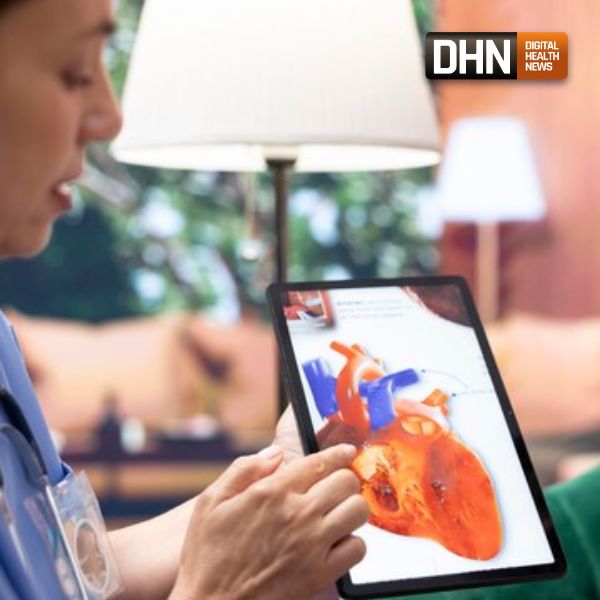
India’s healthcare sector is at the cusp of a digital transformation, spearheaded by the National Digital Health Mission (NDHM). Launched in 2020, this ambitious initiative aims to create a unified digital health ecosystem, making healthcare more accessible, affordable, and efficient. By leveraging cutting-edge technology, the NDHM is poised to address some of the most pressing challenges in India’s healthcare landscape, particularly in underserved areas.
What is the National Digital Health Mission (NDHM)?
The NDHM is a government-led initiative designed to establish an integrated digital health infrastructure. Its core components include:
-
Health ID: A unique, 14-digit identification number for every citizen, linking their health records across providers.
-
DigiDoctor: A repository of verified medical practitioners, ensuring easy access to qualified professionals.
-
Health Facility Registry: A centralized database of healthcare institutions, including hospitals, clinics, and diagnostic labs.
-
Electronic Health Records (EHR): Digitized patient health records for seamless data sharing and continuity of care.
-
Telemedicine Services: Enabling remote consultations and reducing barriers to specialist care.
Challenges in India’s Healthcare System
-
Accessibility Issues: Rural areas often lack basic healthcare infrastructure and professionals, leaving millions underserved.
-
Fragmented Systems: Patient health data is scattered across various providers, leading to inefficiencies.
-
Affordability: High out-of-pocket expenses deter many from seeking timely medical care.
-
Trust Deficit: Lack of transparency in healthcare delivery affects patient trust.
-
Overburdened Facilities: Urban hospitals face overcrowding, while rural clinics remain underutilized.
The NDHM seeks to address these challenges by leveraging digital solutions to create an inclusive and equitable healthcare ecosystem.
How the NDHM Will Improve Healthcare Accessibility
1. Streamlined Access to Health Records
The NDHM’s Health ID will serve as a central repository for all medical records, accessible to patients and providers alike.
-
Benefits for Patients:
-
Eliminates the need for carrying physical documents.
-
Ensures continuity of care, even when visiting different providers.
-
Empowers patients with control over their health data.
-
-
Benefits for Providers:
-
Simplifies medical history retrieval, leading to faster diagnoses and better treatment plans.
-
Reduces duplication of tests, saving time and costs.
-
2. Enhanced Rural Healthcare Access
By integrating telemedicine services, the NDHM bridges the urban-rural healthcare divide.
-
Remote Consultations: Rural patients can connect with specialists from urban centers without traveling long distances.
-
Reduced Costs: Virtual consultations minimize travel expenses and time off work.
-
Timely Interventions: Faster access to expert advice improves outcomes for critical conditions.
3. Improved Transparency and Trust
The DigiDoctor and Health Facility Registry components ensure that patients have access to verified professionals and institutions.
-
Authenticity: Only certified practitioners are listed, reducing the risk of quackery.
-
Informed Choices: Patients can compare facilities and providers based on reviews and ratings.
-
Accountability: Digital records increase transparency, fostering trust between patients and providers.
4. Affordable and Efficient Healthcare
The NDHM’s digital framework reduces redundancies and administrative costs.
-
Reduced Duplication: Shared health records prevent unnecessary diagnostic tests and procedures.
-
Efficient Resource Allocation: Data-driven insights help optimize healthcare delivery in underserved areas.
-
Cost Savings: Patients and providers benefit from streamlined processes and reduced paperwork.
5. Promoting Preventive Care
The NDHM emphasizes the importance of preventive healthcare through data analytics and awareness campaigns.
-
Health Monitoring: Continuous tracking of vital health parameters enables early detection of diseases.
-
Personalized Care: AI-driven insights guide lifestyle changes and preventive measures.
-
Targeted Interventions: Epidemiological data helps identify and address regional health trends.
6. Strengthening Public Health Systems
The NDHM’s unified data infrastructure supports government initiatives aimed at improving public health.
-
Pandemic Preparedness: Real-time data enables swift responses to disease outbreaks.
-
Policy Formulation: Aggregated health data informs evidence-based policymaking.
-
Improved Vaccination Coverage: Digital records streamline immunization drives, ensuring better reach and compliance.
Real-World Impact: Case Studies
1. Telemedicine During COVID-19
The NDHM’s telemedicine framework played a crucial role during the pandemic, enabling over 10 million remote consultations via the eSanjeevani platform. This reduced the burden on hospitals and ensured uninterrupted care for non-COVID patients.
2. Digitized Vaccination Drives
Digital health records under the NDHM streamlined the COVID-19 vaccination campaign, ensuring efficient tracking and delivery.
3. Health Data for Regional Planning
Aggregated data from rural regions has guided the allocation of resources, such as mobile medical units and specialist camps, to underserved areas.
Challenges in Implementation
-
Digital Divide: Limited internet access and digital literacy in rural areas may hinder adoption.
-
Data Privacy Concerns: Ensuring compliance with data protection laws is critical for patient trust.
-
Infrastructure Gaps: Upgrading healthcare facilities to integrate with digital platforms requires significant investment.
-
Change Management: Training healthcare professionals to adopt new systems poses a challenge.
Strategies to Overcome Challenges
-
Infrastructure Development: Expanding broadband connectivity and equipping rural facilities with digital tools.
-
Awareness Campaigns: Educating citizens about the benefits of the NDHM and how to use its services.
-
Data Security Measures: Implementing robust encryption protocols and adhering to privacy regulations.
-
Collaborations: Partnering with tech companies, NGOs, and local governments to scale solutions effectively.
The Future of Healthcare Accessibility in India
As the NDHM continues to evolve, its potential to revolutionize healthcare accessibility in India becomes increasingly evident. By integrating advanced technologies such as AI, blockchain, and IoT, the NDHM will enhance efficiency, transparency, and patient-centric care.
Vision for 2030
-
Universal Health Coverage: Ensuring that every citizen has access to quality healthcare services.
-
Reduced Health Inequities: Bridging the urban-rural divide through equitable resource allocation.
-
Data-Driven Health Ecosystem: Leveraging analytics to predict and prevent health crises.
Conclusion
The National Digital Health Mission is a game-changer for India’s healthcare sector, addressing longstanding issues of accessibility, affordability, and transparency. By creating a unified digital health ecosystem, the NDHM empowers patients and providers alike, fostering a more equitable and efficient healthcare system. While challenges remain, strategic efforts and technological advancements will ensure the mission’s success, transforming healthcare delivery for generations to come.